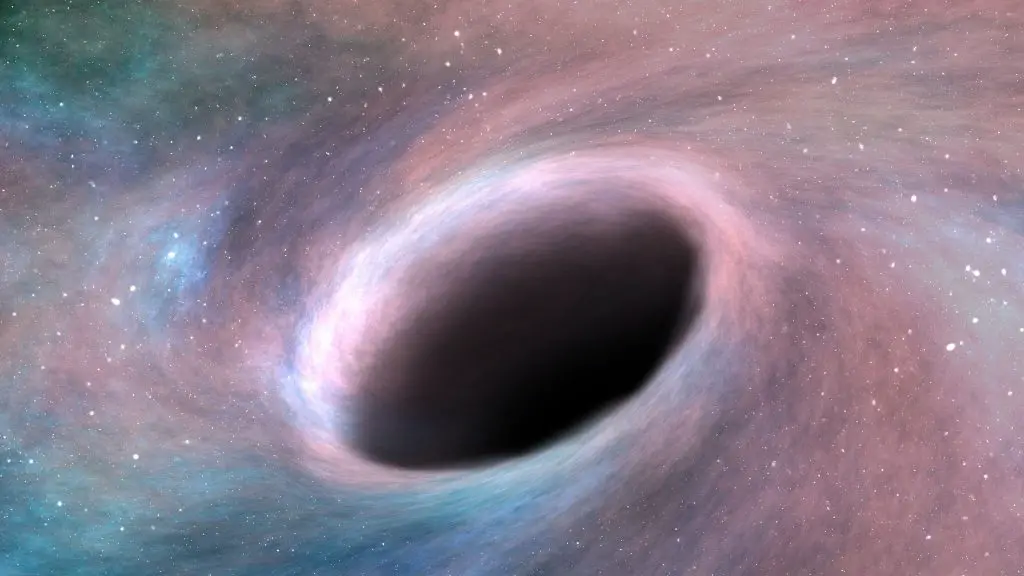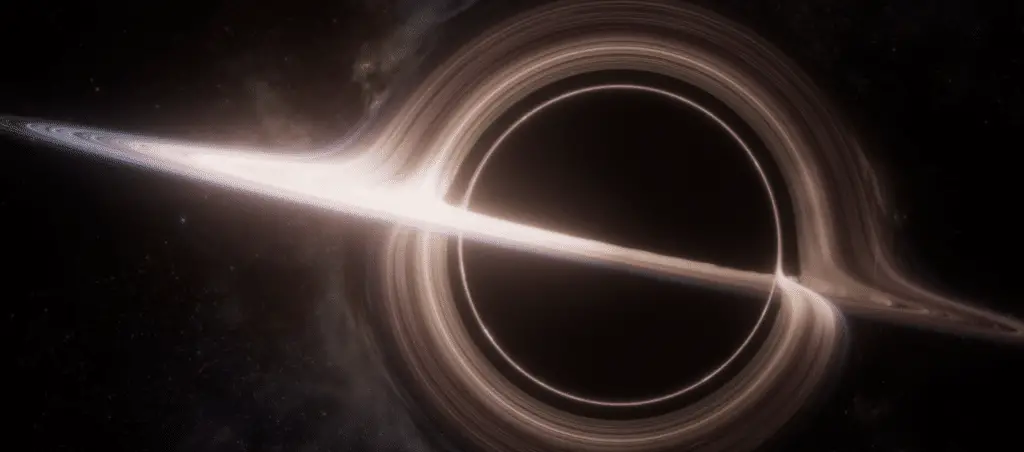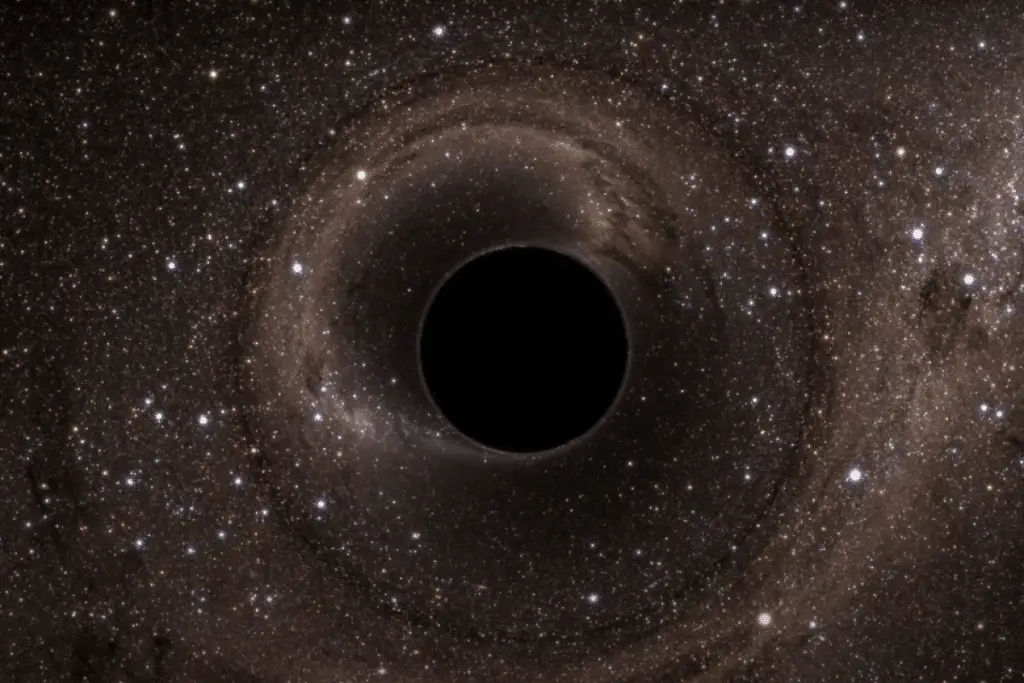A team of astrophysicists led by Caltech has for the first time simulated the journey of primordial gas from the early universe to the stage where it is engulfed by a disk of material feeding a single supermassive black hole. The new computer simulation overturns ideas about such disks that astronomers have held since the 1970s and opens the way to new insights into how the black holes and galaxies grow and evolve.
The Evolution of Black Holes
“Our new simulation marks the culmination of several years of work from two major collaborations here at Caltech,” says Phil Hopkins, the Ira S. Bowen Professor of Theoretical Astrophysics.
The first collaboration, dubbed FIRE (Feedback in Realistic Environments), focused on the largest scales in the universe, studying questions such as how galaxies form and what happens when galaxies collide. The other, dubbed STARFORGE, was designed to examine much smaller scales, including how stars form in individual clouds of gas.
“But there was this big gap between the two,” Hopkins explains. “Now, for the first time, we’ve bridged that gap.”
To achieve this, the researchers had to create a simulation with a resolution more than 1,000 times higher than the best ever achieved in the field.
To the team’s surprise, as reported on The Open Journal of Astrophysics the simulation revealed that magnetic fields play a much more important role than previously thought in forming and shaping the huge disks of material that swirl around and power supermassive black holes.

“Our theories told us that the disks should be flat like crepes,” Hopkins says. “But we knew that wasn’t the case because astronomical observations reveal that the disks are actually soft, more like angel food cake. Our simulation helped us understand that magnetic fields are holding the disk material up, making it softer.”
In the new simulation, researchers performed what they call a “superzoom-in” on a single supermassive black hole, a monstrous object that sits at the heart of many galaxies, including our own Milky Way. These mysterious, hungry bodies contain thousands to billions of times the mass of the sun, and so have a huge effect on anything that comes near them.
Astronomers have known for decades that when gas and dust are pulled in by the tremendous gravity of these black holes, they don’t immediately get sucked in. Instead, the material first forms a rapidly rotating disk, called an accretion disk. And when the material is about to fall in, it radiates enormous amounts of energy, shining brightly like nothing else in the universe. But much is still unknown about these active supermassive black holes, called quasars, and how the disks that feed them form and behave.
Although disks around supermassive black holes have been imaged before (the Event Horizon Telescope imaged disks orbiting black holes at the heart of our galaxy in 2022, and Messier 87 in 2019), these disks are much closer and tamer than those orbiting quasars.

To visualize what’s happening around these more active, distant black holes, astrophysicists turn to supercomputer simulations. They feed information about the physics at work in these galactic settings—from the basic equations that govern gravity to how to deal with dark matter and stars—into thousands of computational processors working in parallel.
This input includes many algorithms, or sets of instructions, that computers must follow to recreate complicated phenomena. So, for example, computers know that once gas becomes dense enough, a star will form. But the process is not that simple.
“If you just say that gravity pulls everything down and then eventually the gas forms a star and the stars accumulate, you’re very wrong,” Hopkins explains.
After all, stars do a lot of things that affect their surroundings. They emit radiation that can heat or push the surrounding gas. They blow winds like the solar wind created by our sun, which can sweep away material. They explode as supernovae, sometimes throwing material out of galaxies or changing the chemistry of their surroundings. So computers need to know all the details of this “stellar feedback,” since it governs how many stars a galaxy can actually form.
At these larger scales, the set of physics that is most important to include and what approximations can be made differs from those at smaller scales. For example, at galactic scales, the intricate details of how atoms and molecules behave are extremely important and must be integrated into any simulation. However, scientists agree that when simulations focus on the immediate area around a black hole, molecular chemistry can mostly be ignored because the gas there is too hot for atoms and molecules to exist. Instead, what exists there is hot ionized plasma.
Creating a simulation that could cover all relevant scales down to the level of a single accretion disk around a supermassive black hole was a huge computational challenge, which also required code that could handle all the physics.

“There were some codes that had the physics to solve the small-scale part of the problem, and other codes that had the physics to solve the larger, cosmological part of the problem, but none that had both,” Hopkins says.
The Caltech-led team used a code they call GIZMO for both the large-scale and small-scale simulation projects. It’s important to note that they built the FIRE project so that all the physics they added to it could work with the STARFORGE project, and vice versa.
“We built it in a very modular way, so you could turn on and off as many physics elements as you wanted for a given problem, and still have them all compatible with each other,” Hopkins says.
This allowed scientists in the latest work to simulate a black hole that is about 10 million times the mass of our sun, starting in the early universe. The simulation then zooms in on that black hole at a time when a giant stream of material is being torn from a star-forming gas cloud and begins swirling around the supermassive black hole. The simulation can continue to zoom in, resolving a finer area with each step as it follows the gas on its way to the hole.
“In our simulation, we see this accretion disk forming around the black hole,” Hopkins says. “We would have been very excited if we had just seen that accretion disk, but what was very surprising is that the simulated disk doesn’t look like what we’ve thought for decades it should look like.”

In two seminal papers in the 1970s describing the accretion disks that fuel supermassive black holes, scientists hypothesized that thermal pressure—the change in pressure caused by the change in temperature of gas in the disks—played the dominant role in keeping such disks from collapsing under the tremendous gravity they experience near the black hole. They acknowledged that magnetic fields might play a smaller role in helping to prop up the disks.
In contrast, the new black hole simulation found that the pressure from the magnetic fields of such disks was actually 10,000 times greater than the pressure resulting from the heat of the gas.
“So the disks are almost completely controlled by magnetic fields,” Hopkins says. “The magnetic fields do a lot of things, one of which is to prop up the disks and make the material swell.”
This knowledge changes a number of predictions that scientists can make about such accretion disks, such as their mass, density, and thickness, the speed at which material should be able to move from them toward a black hole, and even their geometry (such as whether the disks might be asymmetric).
Looking ahead, Hopkins hopes that this new ability to bridge the gap in scales for cosmological simulations will open up many new avenues of research. For example, what happens in detail when two galaxies merge? What types of stars form in the dense regions of galaxies where conditions are different from those near our sun? What might the first generation of stars in the universe have looked like?
“There is so much to do,” she says.
#Black #Holes #Grow #Evolve

